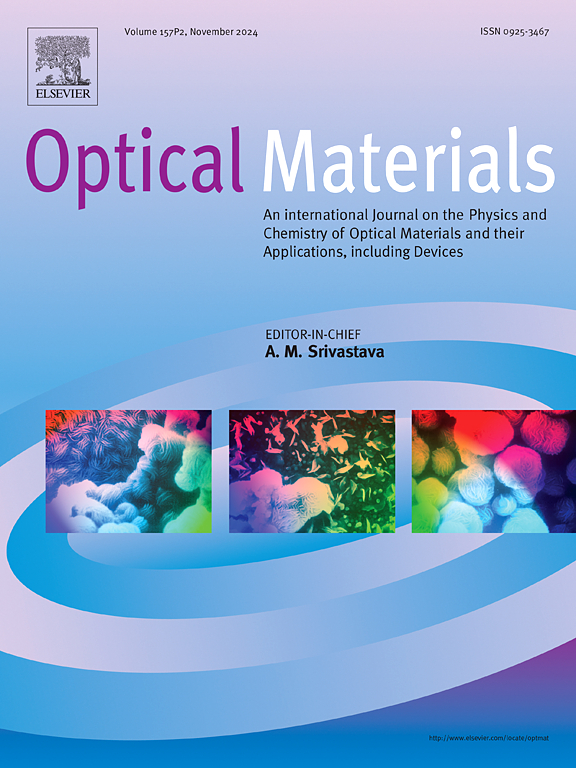High-performance all-dielectric nano-gratings for advanced optical applications: Fabrication and characterization
IF 3.8
3区 材料科学
Q2 MATERIALS SCIENCE, MULTIDISCIPLINARY
引用次数: 0
Abstract
All-dielectric nano-grating structures exhibit exceptional optical properties, combining robust material stability with precise wavelength modulation, positioning them as highly suitable for advanced optical applications. This study introduces Si3N4-based nano-gratings fabricated on polycarbonate (PC) substrates using an optimized injection molding process. The resulting gratings demonstrate superior optical performance, including high reflectivity (>85 %), narrowband spectral response (full-width at half-maximum, FWHM <10 nm), and minimal sideband reflection (<3 %). Finite-difference time-domain (FDTD) simulations guided the optimization of key structural parameters, revealing their critical effects on optical performance. Experimental validation confirmed the gratings' reproducibility of up to 98 % and high structural fidelity, achieved under optimized processing conditions. These findings highlight the scalability and versatility of the proposed fabrication process, making it a promising approach for producing high-performance optical components such as filters, sensors, and displays. The work underscores the application potential of all-dielectric nano-gratings in next-generation optoelectronic devices.

用于先进光学应用的高性能全介质纳米光栅:制造和表征
全介质纳米光栅结构具有优异的光学性能,结合了坚固的材料稳定性和精确的波长调制,使其非常适合高级光学应用。本研究采用优化的注射成型工艺,在聚碳酸酯(PC)衬底上制备了基于si3n4的纳米光栅。所得到的光栅具有优异的光学性能,包括高反射率(> 85%),窄带光谱响应(半最大值全宽度,FWHM < 10nm)和最小边带反射(< 3%)。时域有限差分(FDTD)模拟指导了关键结构参数的优化,揭示了它们对光学性能的关键影响。实验验证表明,在优化的工艺条件下,光栅的重现性高达98%,结构保真度高。这些发现突出了所提出的制造工艺的可扩展性和多功能性,使其成为生产高性能光学元件(如滤波器,传感器和显示器)的有前途的方法。这项工作强调了全介质纳米光栅在下一代光电器件中的应用潜力。
本文章由计算机程序翻译,如有差异,请以英文原文为准。
求助全文
约1分钟内获得全文
求助全文
来源期刊

Optical Materials
工程技术-材料科学:综合
CiteScore
6.60
自引率
12.80%
发文量
1265
审稿时长
38 days
期刊介绍:
Optical Materials has an open access mirror journal Optical Materials: X, sharing the same aims and scope, editorial team, submission system and rigorous peer review.
The purpose of Optical Materials is to provide a means of communication and technology transfer between researchers who are interested in materials for potential device applications. The journal publishes original papers and review articles on the design, synthesis, characterisation and applications of optical materials.
OPTICAL MATERIALS focuses on:
• Optical Properties of Material Systems;
• The Materials Aspects of Optical Phenomena;
• The Materials Aspects of Devices and Applications.
Authors can submit separate research elements describing their data to Data in Brief and methods to Methods X.
 求助内容:
求助内容: 应助结果提醒方式:
应助结果提醒方式:


